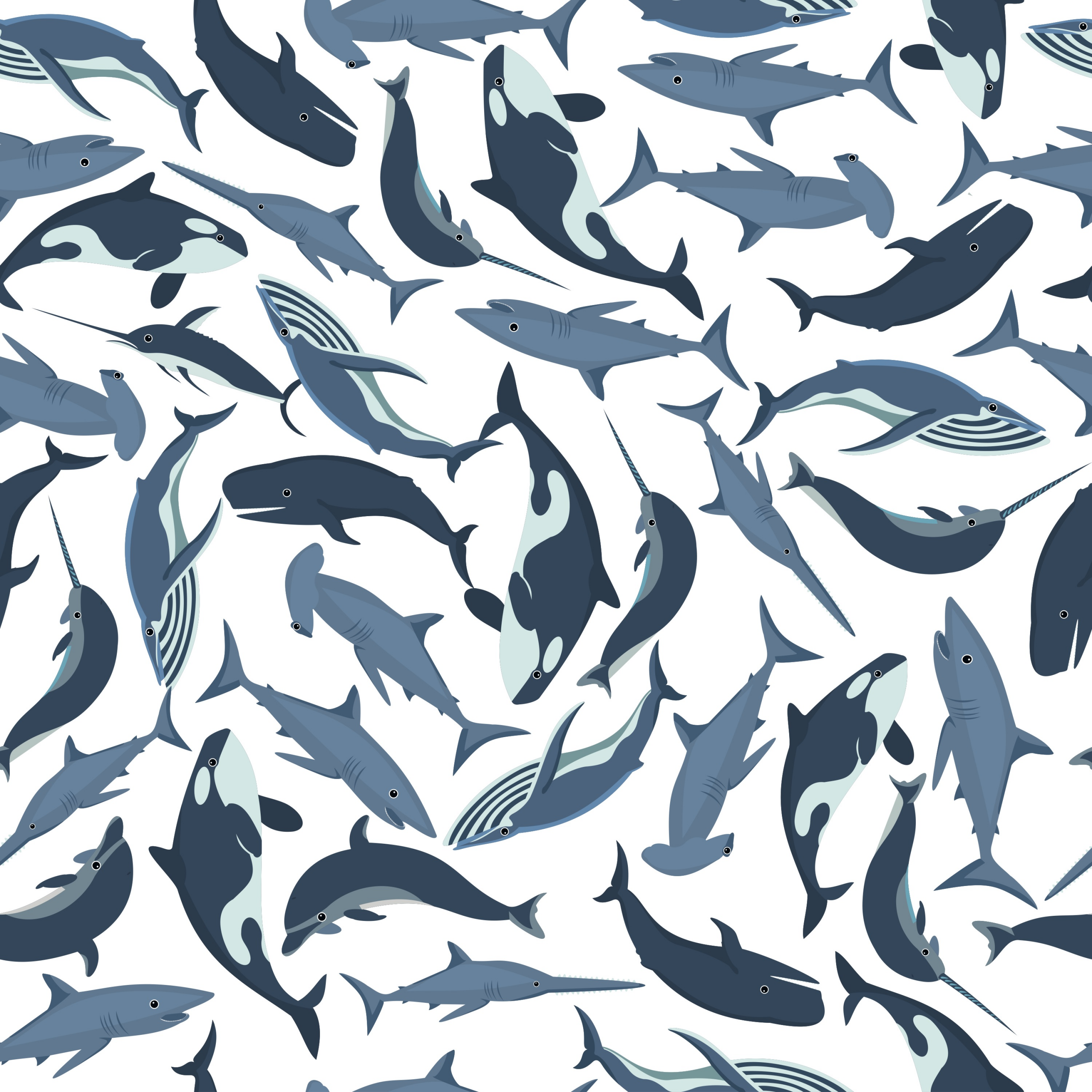Under a new name and arguing a significant reduction in the number of whales that would be killed annually in the Southern Ocean whale sanctuary, the Japanese government seeks to avoid compliance with the historical ruling of the International Court of Justice (ICJ), which ordered (Japan) to stop its whaling operations and refrain from issuing new “scientific” whaling permits.
After stating in March 2014 that it would comply with the ruling of the ICJ, the Japanese government presented on November 19 a new plan to continue whaling on a commercial scale, under the pretext of “scientific” research. However, a quick analysis of the proposal indicates that the name is the only truly innovation about this whaling plan, called NEWREP-A.
Although several media reports have presented the news as a proposal that would significantly reduce the auto-granted quota for killing whales, the truth is that NEWREP-A will increase by 32% the number of antarctic minke whales to be captured in the Southern Ocean whale sanctuary, in relation to the number of whales that were hunted during the last season of JARPA II, the program sentenced as illegal by the ICJ.
Under JARPA II, the Japanese government self-awarded quotas to hunt 850 antarctic minke whales, 50 fin whales and 50 humpback whales a year. However, the average number of minke whales caught annually was around 430. Therefore, the new quota of 333 antarctic minke whales represents an effective reduction of only 7.7% in the number of whales killed under illegal whaling program JARPA II. Thus, the significant reduction in the number of whales killed seems to be part of the propaganda strategy that has historically characterized “scientific” whaling programs conducted by Japan.
Additionally, the Japanese government systematically seems to forget that their whaling operations are conducted in a sanctuary, where all commercial whaling is prohibited, regardless of the conservation status of the whales. This is not only because Japan seeks to continue killing antarctic minke whales at a commercial scale, but also because the main goal of the new whaling program, NEWREP-A, is the application of a formula, known as RMP (Revised Management Procedure), designed exclusively to calculate commercial whaling quotas. It is therefore evident that the strategic goal of Japan in keeping alive Antarctic whaling operations is to eliminate de facto the whale sanctuary in the Southern Ocean. It is important to recall that this sanctuary was created in 1994 with the support of all member countries of the International Whaling Commission (IWC), except Japan.
The second of the two objectives described in NEWREP-A, is to understand the structure and dynamics of the Antarctic marine ecosystem. To do so, Japan argues that it needs to analyze the stomach contents of hundreds of whales each year for at least 12 years. However, the IWC Scientific Committee has reiterated in many occasions that this information is irrelevant to the management of whale stocks and the application of the RMP. Additionally, it is incomprehensible that after killing more than thirteen thousand whales in the Southern Ocean whale Sanctuary under JARPA and JARPA II, the Japanese government still claims it needs to continue slaughtering hundreds of whales each year to learn about their stomach contents.
Like JARPA II, the calculation used by the Japanese government to determine an annual quota of 333 antarctic minke whales under NEWREP-A, is not clear in the new Japanese proposal. The japanese document even acknowledges that this figure is based on the best scientific information available to achieve the first objective, but that it has been unable to determine a specific quota for its second goal. Therefore the quota would be subject to review. Is important to note that the latest review of this kind in Japan occurred at the end of JARPA, and represented a 100% increase in the hunting quota auto-assigned under JARPA II (an increase from 440 to 850 antarctic minke whales).
More or less whales, the fact is that self-granted quota established by Japan under NEWREP-A exceeds 3,300% the number recommended by the only scientific witness presented by the defense of Japan at the International Court of Justice. On July 5, 2013, the Norwegian researcher Lars Walloe said before the judges of the Court that the number of whales taken under “scientific” whaling programs should not exceed ten animals.
Perhaps most worrisome are the cynical arguments of the Japanese government to justify the new whaling program in Antarctica. According to Japan, the ruling of the International Court of Justice does not alter the interpretation of the International Convention for the Regulation of Whaling, that for Japan, is nothing more than a bureaucratic organization dedicated to calculate and grant commercial whaling quotas. However, the ICJ was emphatic in stating that considering the many amendments adopted by the IWC – such as the adoption of the moratorium and the creation of whale sanctuaries, “the Convention is an evolving instrument” This means that member countries of the IWC should not implement actions that contravene or undermine other provisions of the Convention, such as the moratorium on commercial whaling and whale sanctuaries.
Considering that the effectiveness of international agreements rely in the cooperation and goof faith of its members, Japan has the obligation to recognize the evolving nature of the Convention, respect the current regulatory regime of the IWC and enforce the ruling of the International Court of Justice, refraining from issuing new “scientific” whaling permits.
But Japan has not only chosen to continue killing whales in the southern hemisphere, it has also unilaterally decided to expand its operations to the southwest Atlantic and eastern south Pacific. This last area coincides with Chile’s Search and Rescue Area in Antarctica. In practical terms this would mean that the Chilean State has the obligation to attend any accident or incident that the Japanese whaling fleet could have in the area.
As JARPA and JARPA II, the new Antarctic whaling proposal does not foresee an end date of the “scientific” research program. Although the proposal states that initially NEWREP-A would be conducted for 12 years but that it could be extended over that period.
After capturing tens of thousands of whales illegally, the new Japanese whaling program in Antarctic waters, NEWREP-A, evidence that the intention of the government of Japan is to circumvent the landmark ruling of the International Court of Justice to continue on with the commercial slaughter of whales disguised as “scientific” research, and impose de facto its geopolitical interests in the high seas and Antarctic territory to southern hemisphere countries. This new situation is consistent with international new policies – especially in the Pacific Ocean – driven by ultra-nationalist, expansionist and militaristic sectors in Japan, which are behind the conservative pro-whaling japanese interests.
In conclusion, NEWREP-A remains the same commercial whaling program that was sentenced illegal by the highest international legal body last March. It will capture a larger number of whales than JARPA II. It will probably use the same anachronistic Antarctic whaling fleet (whose operation constitute a threat to the fragile Antarctic marine ecosystem and human life). It will be implemented by the same organization that has conducted JARPA and JARPA II (Institute for Cetacean Research). It has no definite ending date and it will continue to commercialize the meat and products obtained with the sole purpose of keeping alive the Japanese whaling industry until the elimination of the moratorium and the Southern Ocean whale sanctuary.
Similarly to what ICJ President affirmed while reading the landmark ruling against JARPA II, Japan’s intentions behind the so-called “scientific” whaling program in Antarctica continue to be logistical and political rather than scientific.
Considering that the ICJ ruled that future operations of this kind are illegal, it is necessary to urgently prevent the implementation of NEWREP-A by Japan in 2015. This requires that like-minded countries, particularly members of the Grupo Buenos Aires – with the support of local, regional and international NGOs – send a strong message condemning the government of Japan. In this regard, it is noteworthy to recall that in 2014 the Chilean Senate has unanimously adopted two agreements, requesting President Michelle Bachelet to send a diplomatic protest to the Japanese government regarding this issue. After the presentation of NEWREP-A to the world, it is clear that the time to make this protest effective is now.
By: Elsa Cabrera, executive director of the Centro de Conservacion Cetacea and Juan Carlos Cardenas, executive director Centro Ecoceanos



